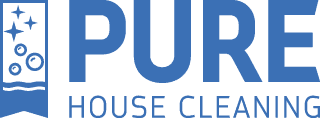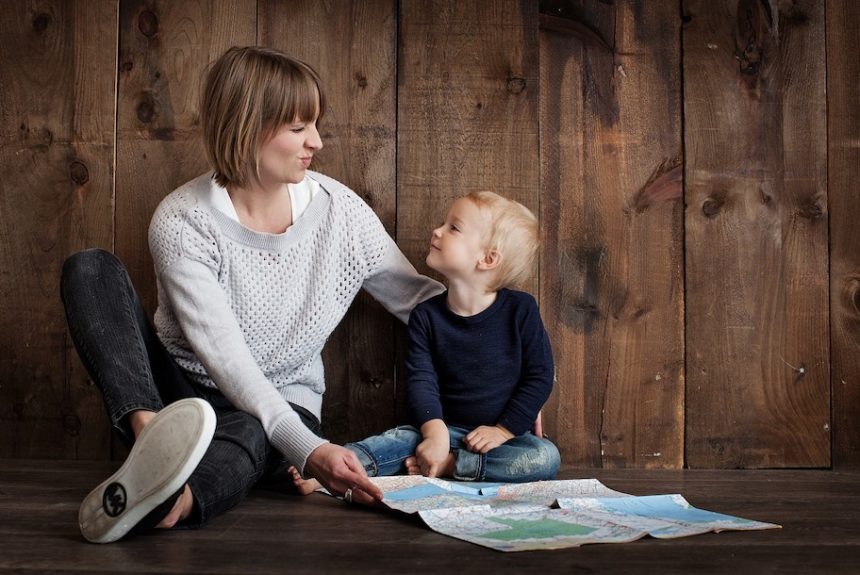A good quality of life for you and your children starts inside the home. Children’s physical, mental, and behavioral health are affected by their surroundings, and it is the responsibility of the parent to ensure that they are in the best environment for their development.
Sometimes, parents unknowingly put their children at risk; simply because they are unaware of the practices or chemicals around them that cause harm to their children. In this article, the professional Seattle cleaners from Pure House Cleaning share how adopting green cleaning practices and eco-friendly essentials for house cleaning can improve the quality of life for your children.
Skip to section
Learning These Eco-Friendly House Cleaning Essentials Will Provide You With:
More confidence about the environment your children are growing up in.
Green/eco-friendly essential house cleaning skills to keep your home clean but keep your children safe!
More awareness about things in your home that may be causing your child’s sickness or allergies.
Happier children.
WARNING! Do you know these health and wellness facts related to how you clean your home?
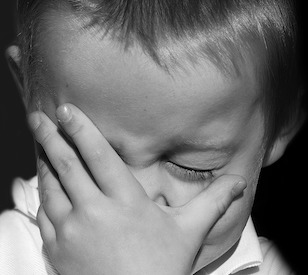
Fact: One EPA study confirmed that the toxicity of household cleaners is 3x more liable to cause cancer than external pollution.
Fact: Women going through pregnancy can expose their fetus to chemical compounds that can lead to lifelong health problems. This could lead to obesity, diabetes, hypertension, cardiovascular disease, asthma and allergies, immune and autoimmune diseases, neurodevelopmental and neurodegenerative diseases, precocious puberty, infertility, some cancer types, osteoporosis, depression, schizophrenia, and sarcopenia.
Fact: There is a high risk of getting cancer if you or your children are exposed to chemicals containing carcinogens over a long period of time.
Fact: Data from Washington State show that about 6% of janitors experience a job-related injury from chemical exposure to cleaning products every year. If your family is exposed to the same chemicals, they also face the same health risk.
Common Chemicals Known to Contribute to Serious Health Effects:
- 1,4 dioxane
- 1,1 dichloroethane
- Acrylic acid
- Benzene
- Benzidine
- 1,3 butadiene
- Carbon tetrachloride
- Chloroform
- Ethylene oxide
- Nitrilotriacetic acid
- Butyl benzyl phthalate
- Butyl decyl phthalate
- Di(2-ethylhexyl) phthalate
- Diethyl phthalate
- Diisobutyl phthalate
- Di(n-octyl) phthalate
- Diisononyl phthalate
- Dioctyl phthalate
- Butylparaben
- Ethylparaben
- Isobutylparaben
- Methylparaben
- Propylparaben
- Formaldehyde
- DMDM hydantoin
- Diazolidinyl urea
- Glyoxal
- Imidazolidinyl urea
- Polyoxymethylene urea
- Sodium hydroxymethylglycinate
- 2-Bromo-2-nitropropane-1,3-diol
- N-Nitrosodimethylamine
- N-Nitosodiethylamine
- 1-(3-chloroallyl)-3,5,7-triaza-1-azoniaadamantane chloride
What are the Health Risks for Parents Not Using Green Cleaning Practices?

There are several serious health risks that can affect you and your children inside the home when not using eco-friendly house cleaning essentials. These include:
- Asthma
- Chemical burns
- Cancer
- Neurological development
- Poisoning
Asthma Attacks from Chemical Cleaners
There are multiple things that can trigger asthma attacks in the home. These include:
Dust mites – These thrive in bedding and carpets. Review your cleaning products and methods to make sure they aren’t attracted to warm and moist conditions in which they love to reside.
Inhaling allergens or irritants – These may be caused by an increase in air pollution from the cleaning products and habits that you use in your home.
Mold – This is a result of moist or damp environments. This could be a result of cleaning habits, chemicals, and methods being used inside your home.
Chemical Burns from Harsh Cleaners
You don’t want to clean a surface thinking that it is safe, only for your child to receive burns or violent reactions to the chemicals from the cleaning products that were used. Pay attention to what is in the cleaning products and the health risks associated with them.
Cancer Risks from Chemicals Found in Cleaners
Carcinogens exist in some cleaning products and are known to contribute to cancer if a person is exposed to them over a long period of time. You don’t want to be the one responsible for shortening the lifespan of your loved ones, so make the switch to green home cleaning essentials.
Neurological Development Delays from Chemicals
There are studies that claim that newborns that are exposed to harmful chemicals found in cleaning products can struggle with mental development, have lower IQs, and develop antisocial behavior, which can lead to criminal activity. Using eco-friendly cleaners can help you cut out the risks of using these dangerous chemicals.
Chemical Poisoning
American Poison Control Centers report that household cleaning products and disinfectants are common causes of poisoning in both children and adults. Prevent a disaster with eco-friendly cleaning essentials that are safe for your children, pets, and the environment.
How Can You Start Implementing Greener Essential House Cleaning Practices to Keep Your Loved Ones Safe?
 Firstly, know the difference between cleaning, sanitizing, and disinfecting.
Firstly, know the difference between cleaning, sanitizing, and disinfecting.
Cleaning is done with water, a cleaning product, and scrubbing. Cleaning does not kill bacteria, viruses, or fungi, which are generally referred to as “germs.” Cleaning will involve the use of water and soap or detergent to physically remove the germs and put them down the drain. Cleaning can remove 98% of bacteria and 93% of viruses from surfaces using microfiber and water.
Sanitizing is the use of a chemical product or device (like a dishwasher or a steam mop) that reduces the number of germs on surfaces or objects to a level considered safe by public health standards or requirements. A sanitizer should reduce germs on a surface by at least 99.9% within 30 seconds.
Disinfectants kill more germs than sanitizers. It doesn’t mean that the surface is cleaned or that the germs have been removed. In most cases, a cleaning product is used first. Then the surface is either sanitized or disinfected when it is necessary. Disinfecting uses chemicals to kill 99.999% of germs on hard, non-porous surfaces or objects.
Disinfecting only works on hard, non-porous surfaces. So, you won’t be able to disinfect carpets or upholstery. You also need to keep in mind that it is temporary – once they are exposed, germs can start growing on the surface again.
Which House Cleaning Essential Products Should be Used to Clean?
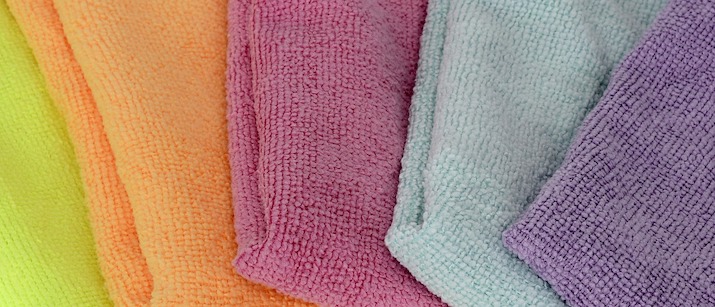
- You want to find the following types of house cleaning essential products in eco-friendly forms:
- One concentrate that can be diluted as a bathroom and restroom cleaner
- An All-purpose cleaner
- Carpet spotter/extraction cleaner
- Glass and window cleaner
- Floor cleaner
- Heavy-duty cleaning product
- Hand soaps (with no antibacterial properties) and hand sanitizers
- Environmentally preferable and safer disinfectants and sanitizers. Choose a product that has been certified by the Design for the Environment Disinfectant Pilot Program.
- Floor and carpet care products that are effective
- Wax stripper
- Floor sealer and finish
You’ll want to purchase products recommended by 3rd-party certifiers and look for certifications from the following certifiers on your house cleaning essentials:
- Green Seal
- Design for the Environment (DfE)
You can find a full list of products listed on the EPA website.
What Areas of Your Home Do You Need to Keep Clean?
- Tabletops
- Kitchen benches
- Floors
- Walls
- Doors
- Sinks
- Windows
- Chairs
- Toilets
- Ceilings
- Fans
- Door handles
- Sink handles
- Computer keyboards
- Telephones
- Microwaves
- Ovens
- Light switches
- Upholstery
- Carpets
- Clothes
- Rugs
- Mats
- Blankets
What Equipment Should You Use to Clean Your Home?
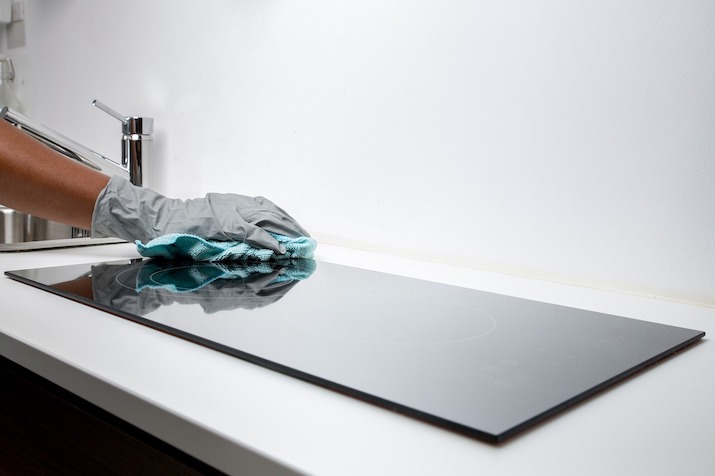
- Microfiber cleaning cloths and mops to get rid of dirt, oils, grease, and germs on surface areas.
- Vacuum to remove dirt and dust from surface areas such as carpets, floors, and mats.
- Broom, dustpan, and brush to remove dust from surface areas such as floors.
- Latex chemical-resistant gloves
- Mop and bucket (ideally, a split-bucket station) to floors.
- Dishwashers for sanitizing dishes, glassware, and utensils
- Steam cleaners to sanitize, deodorize, and remove grease, dirt, and product residues thoroughly and quickly without chemicals.
- Washing machine to launder items such as clothes, towels, soft toys, etc.
- Paper towels
Green Home Cleaning Starts with Prevention
The more processes you have in place for keeping clean spaces, the more environmentally friendly your cleaning will become and the easier it will be when it’s time for a deep clean. Here are a few things you can do to start:
- Avoid excess packaging
- Ditch disposable items
- Avoid air fresheners
Minimize purchasing packaged items.
Almost everything that you purchase from a shop or a supermarket comes in packaging, which can add waste or clutter to spaces. If possible, avoid purchasing packaged items or if you must, purchase the bulk items to minimize the packaging. A simple solution is doing your grocery shopping at local produce or farmer’s markets rather than going to the supermarket.
Stop using disposable products.
Using items such as disposable wipes is a convenient way to clean up spills and messes inside your home. However, you will be creating additional waste. Instead, use reusable towels or rags to clean. Have a stack of them in a nearby space and hang soiled ones out to dry.
Should you use disposable products, opt for ones that are biodegradable. You can even recycle them from the fabric of your old clothes. You can then throw out the rags when you feel like they are no longer usable.
Avoid using air fresheners.
Air freshers can contain a concentrated amount of toxic chemicals that can easily be absorbed into the body by inhaling or touching surfaces.
The best way to freshen up your home is to open the windows and doors and air out your home. It will clear out most of the unpleasant odors that have accumulated in your home. If possible, get into the habit of leaving your windows or doors open throughout the day. If this isn’t possible, aim to ventilate your home for 5-10 minutes throughout the day.
Start Implementing Green Cleaning Essentials and Practices in Your Home
From swapping chemicals for eco-friendly cleaning essentials to cutting back on toxins, you can make a big impact on your essential home cleaning and overall health. If your plate is too full to worry about overhauling your whole system, or you’d like to learn more about green cleaning services in Seattle, reach out to our professionals at Pure House Cleaning for weekly, bi-weekly, monthly, or deep cleaning services.
Image References
[1] Featured image by Amber McAuley from PixabayBlog Citations
https://www.livescience.com/1737-truth-green-cleaning-products.html
https://www.betterhealth.vic.gov.au/health/conditionsandtreatments/asthma-friendly-home
https://www.asthmaaustralia.org.au/national/about-asthma/manage-your-asthma/triggers
https://ehjournal.biomedcentral.com/articles/10.1186/1476-069X-11-42
https://www.sciencedirect.com/science/article/pii/S1054139X13000888

